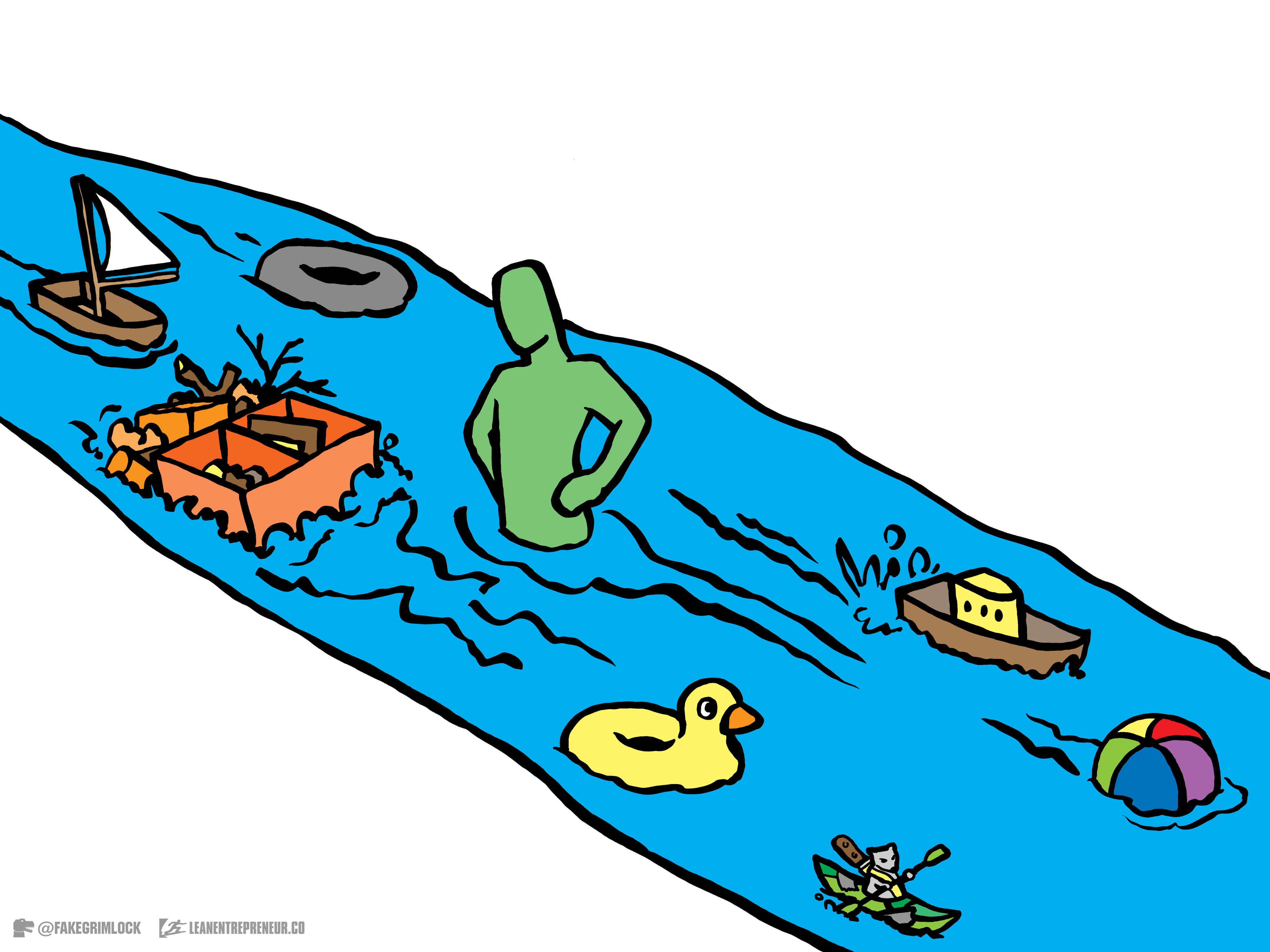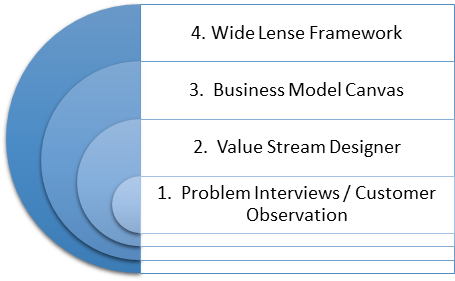Lean Entrepreneur Value Stream + NPS = Customer Love

As many of you have already seen, I am a strong proponent of the use of the Net Promoter Score (NPS). It is an extremely powerful way to measure the value you’re providing to your customers. NPS helps you measure how often you are exceeding your customer’s expectations and provides a rough gauge to know how many customers may be talking (positively or negatively) to their friends about your product.
During the workshops and coaching sessions I’ve noticed a consistent pattern. Teams have no idea how to actually “delight” their customers (score a 9 or 10 NPS). The net promoter and delight concepts get tossed around like a ragged teddy bears. People understand what terms mean, but have no idea how to make the concept tangible.
Fortunately, Brant Cooper and Patrick Vlaskovits recently released their second book titled “The Lean Entrepreneur”. In this book they introduce a new tool called the Value Stream Designer (I’ll refer to it as VSD for the remainder of this article). I’ve had the pleasure of facilitating some workshops that utilize the tool.
In my opinion the VSD does a great job of helping teams keep from over-building their minimum viable product, hypothesize about what their customer actually expects and determine EXACTLY they are going to build! Additionally it facilitates getting your entire team on the same sheet of music as early as possible which is critical to your ability to be successful. I’m not going to go into detail about the actual mechanics of the VSD as Patrick and Brant already do a great job of covering that in The Lean Entrepreneur. I’ll stay focused on tips and tricks I’ve learned as a result of coaching many teams to use the tool.
Keep From Over-Building by Designing the Minimum Viable Product
Unfortunately, I have yet to see a single team that has been able to focus on building exactly what is necessary to solve their customer’s single problem right out of the gate. They get excited and want to build far more than is necessary. This observation includes many seasoned business professionals and Lean Startup experts. This problem is difficult to see because your team has their noses to the grindstone and are trying to move quickly. The VSD can help you solve this forest for the trees problem.
After you have a basic level of customer empathy; you know what problems you solve for each customer and think you know how your solution will fit into their workflow. I recommend that you print a large wall poster ($10 at Kinko’s) and have your entire team use post-its to fill in the VSD. You should start with the boxes inside the “Satisfied” section and then move on to the “Hopeful” section.

During this process you need to frequently push your team to get very specific about the values they write down. The more specific they can get the better. If it feels uncomfortable then you’re doing it right. Additionally, you should keep in mind that these values are nothing more than hypotheses. Every one of these are guesses that you’ll need to convert into facts using experiments with your target customers.
If you end up being correct about the hypotheses in these two boxes then you should have identified how you can ensure a net promoter score of 7 or 8 (neutral). Customers that make it to this point should have had their expectations met. We will get to the “Passionate” box (NPS of 9 or 10) later in the exercise.
Hypothesize About What Your Customer Actually Expects
As you filled out the “Satisfied” and “Hopeful” boxes on the VSD you will have come across the details of what you should be promising to your customers. You’ve just hypothesized about what impact you can make on them and how you will go about doing it.
You should now continue to move backward through the rest of the VSD (Convinced, Trusting, and Intrigued) and you will begin to dive into the exact touch points where the promises you identified above will initially be placed in front of your customers inside the conversion / sales funnel.
Continue thinking about the promises you had to make in the Satisfied and Hopeful boxes as you fill out the rest of the VSD.
Your final step to complete the VSD is to fill out the boxes inside “Passionate”. This section is typically based on a big insight gathered from watching your customers use your product over time and from experiments you’ve run on those customers. I recommend taking a starting guess about what things you might do to try to create a passionate customer, but it will require many experiments to determine what is actually valuable to the customer.
You now have a map of all of the hypotheses you’re making about the value proposition, funnel and how to actually delight your customer through the product. Additionally, this exercise has a tendency to create shared vision among the team members. Typically teams start out way too high level and it appears that the team has agreement on what they are actually building, but in reality they are all viewing the solution differently.
What about the Business Model Canvas?
One of the most painful things about learning these Lean Startup methodologies is the massive number of tools, frameworks, and puzzles available to teams (entrepreneurs and intrepreneurs). One of the tools that has taken our community by storm is the Business Model Canvas.
We all agree that in the early stages of a new endeavor we are looking for product-market fit. In other words, have we identified a specific customer, problem and solution that complement each other so perfectly that customers begin to pull the product from our hands?

I like to think of the Value Stream Designer as a tool to use to guide our first experiments and stay focused on the riskiest portions of the business model (customer + value proposition). Once you feel confident that your solution will really solve the customer’s problem and you can reliably attract customers then you should move on to looking at the entire business model (business model canvas).
After reducing risk in the larger business model canvas you should move to using the Wide Lens Framework to ensure that you don’t have any co-innovation and/or ecosystem risks in bringing your product to market.
If you can wrap your head about when to use each of these tools then you can safely pull it out of your tool belt at the right time and increase your chances of success. As always, I’d love to hear your feedback. Share how you are applying these tools in your world.







Connect With Me